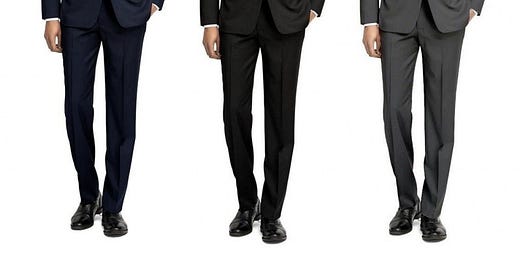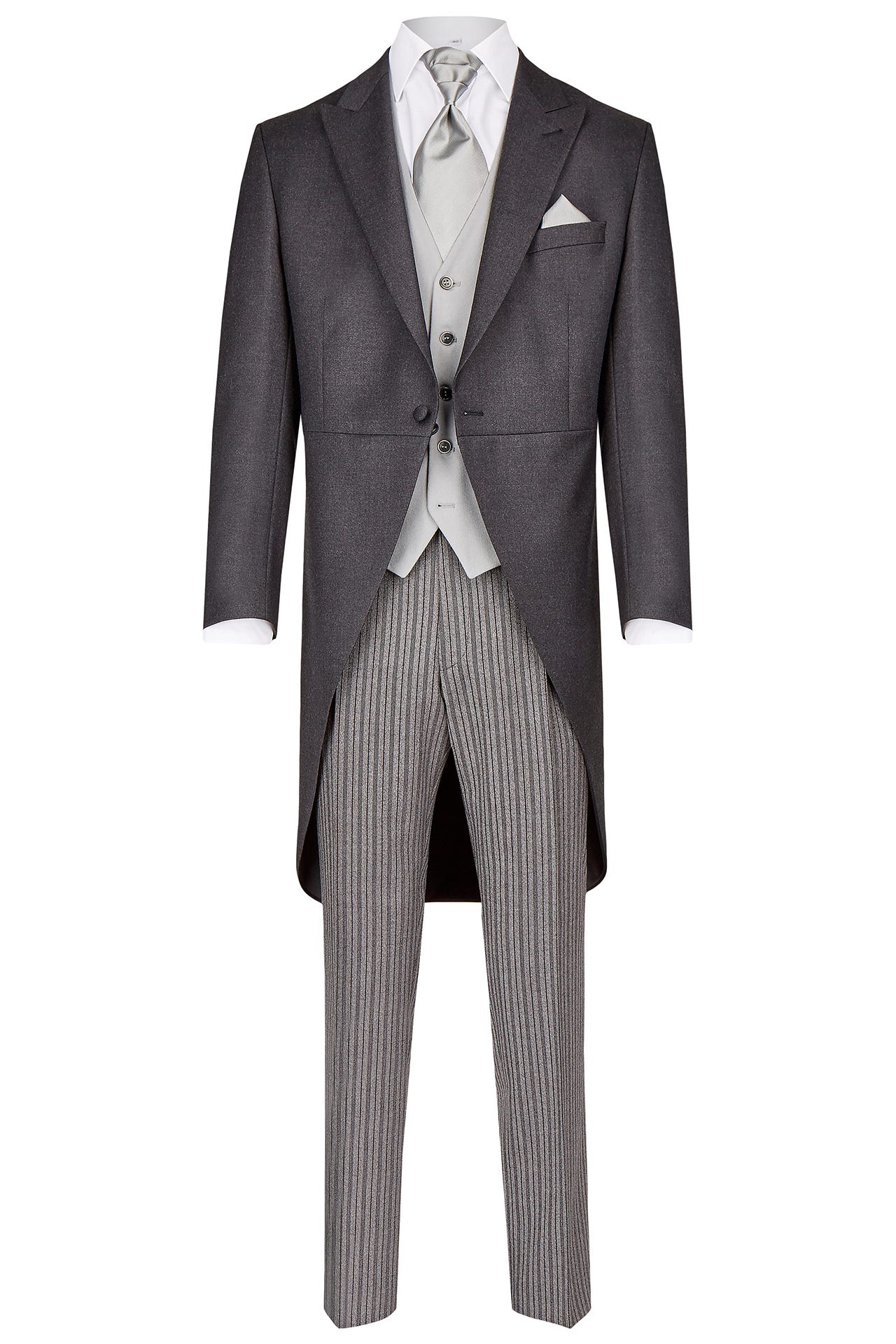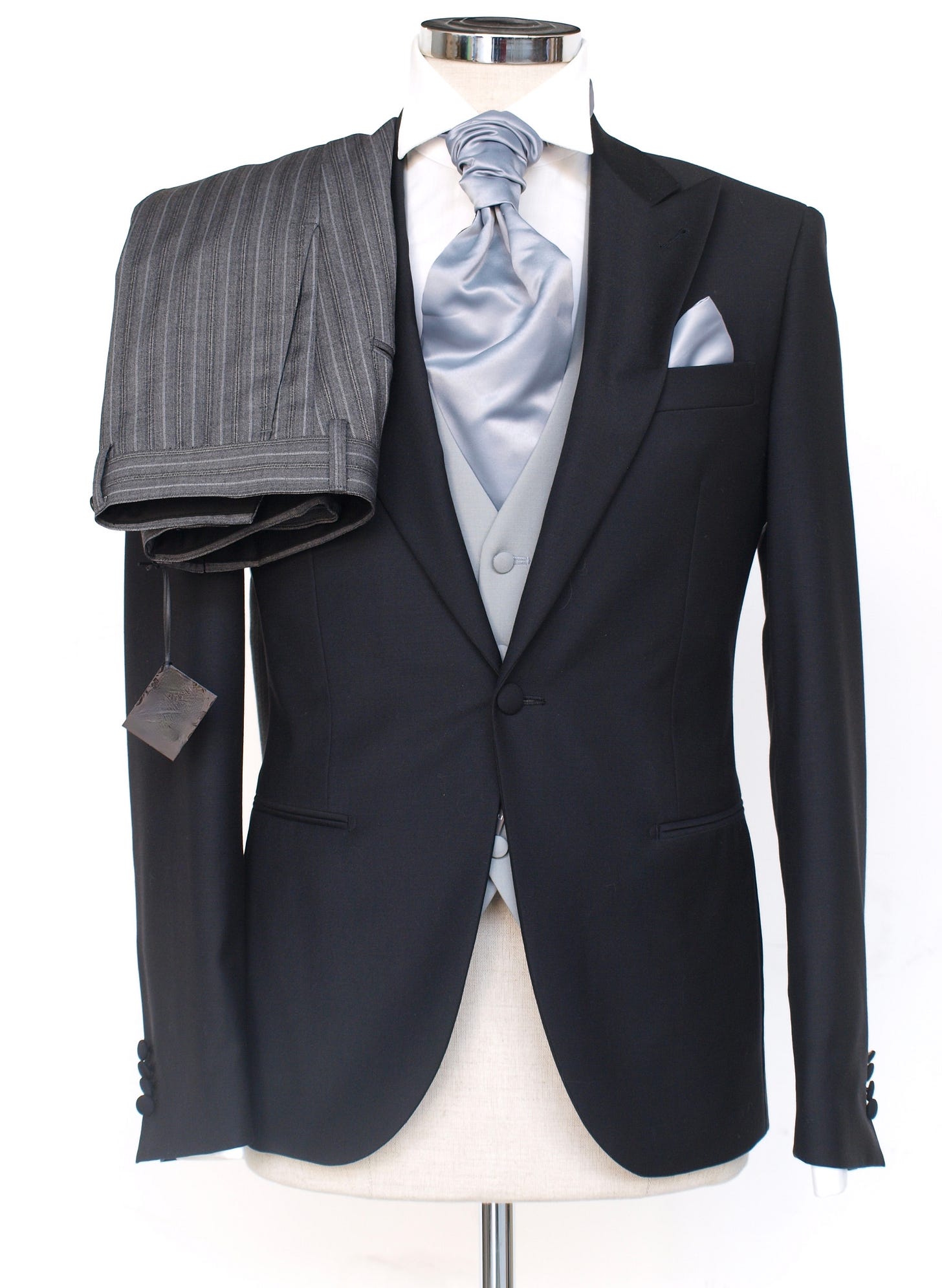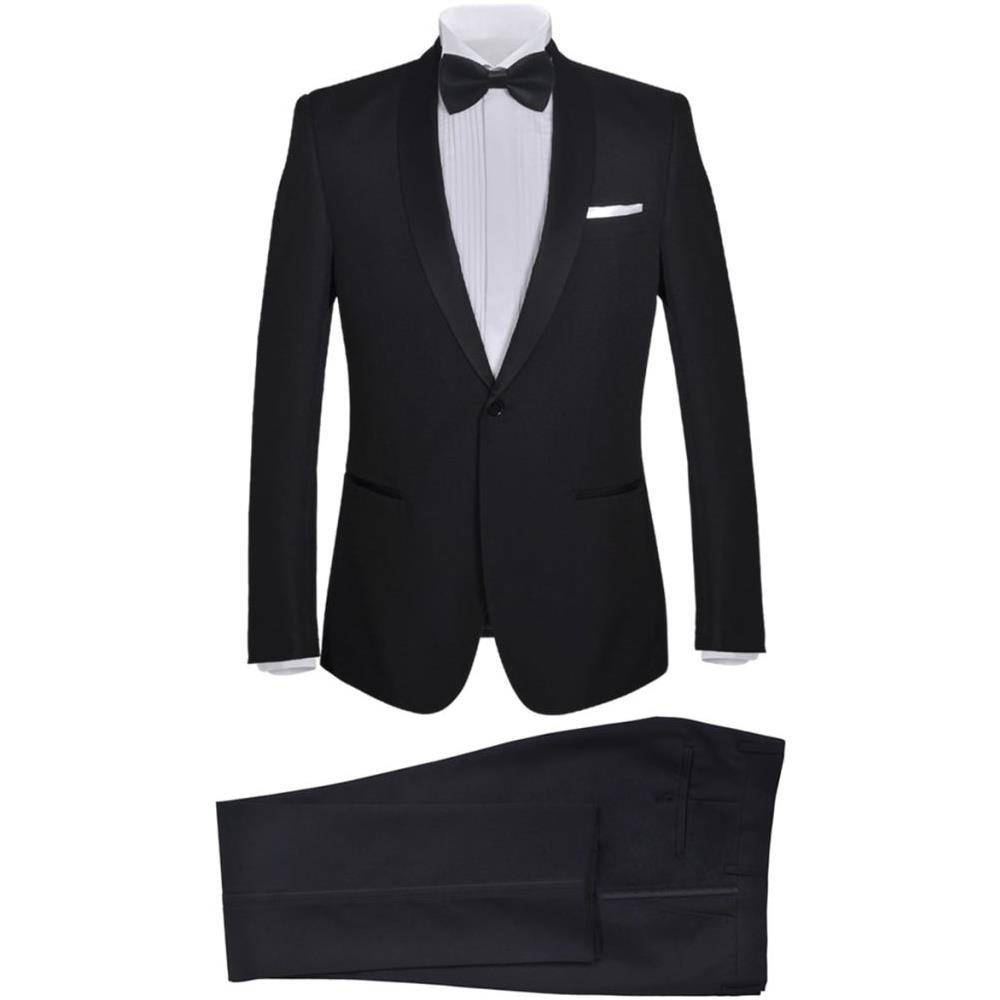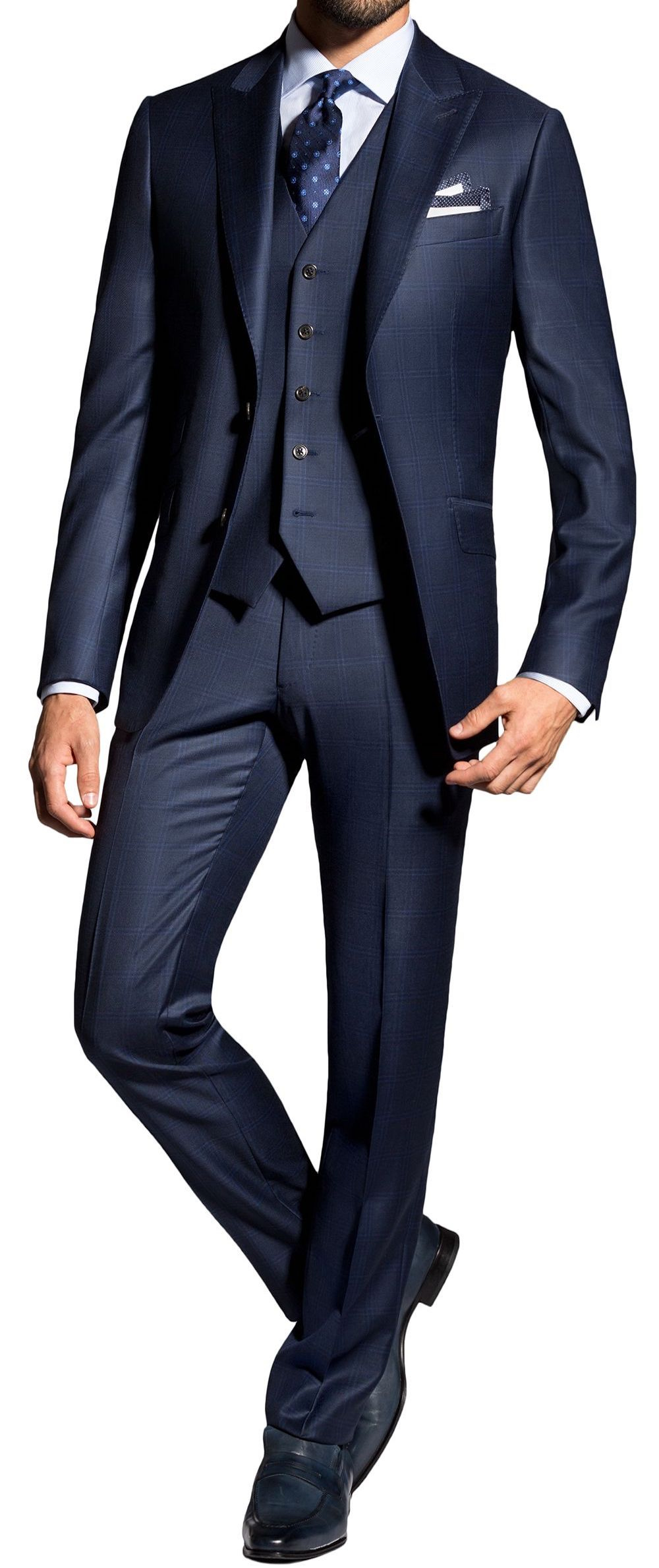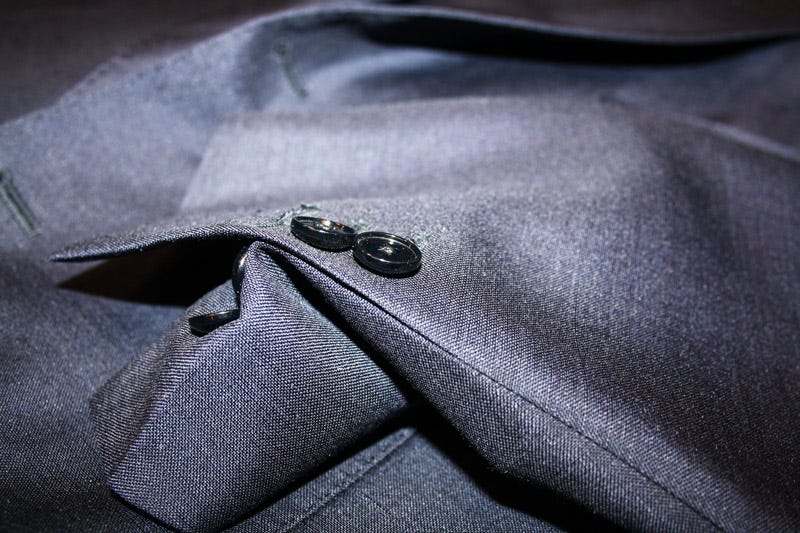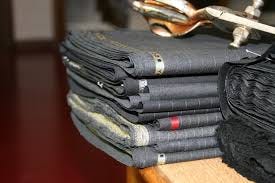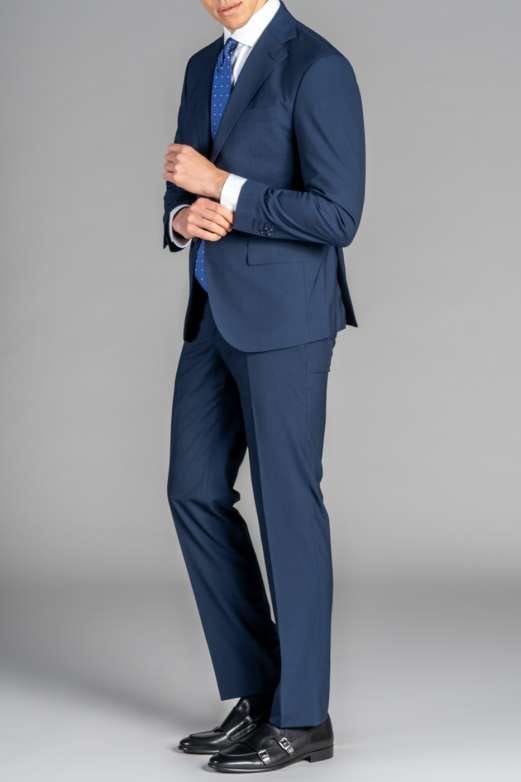Last Sunday I introduced a very broad topic: actually, it was really only a hint of the theme, which is that of the suits of the newlyweds and, consequently, of the guests.
You will surely remember some rules, the basic ones, to begin to orient yourself within this topic. But today we must start to clarify many essential aspects that will lead to making choices at the expense, or benefit, of others.
Meanwhile, I would like to define some points better so as not to take anything for granted.
What’s the Morning Suit.
The Morning Suit is a suit consisting of a tailed jacket in black or anthracite gray wool with dark gray striped trousers, a single-breasted vest with five buttons or a double-breasted shawl. As mentioned last Sunday, it is used for weddings that take place during the day, preferably in the morning.
What’s the Half Morning Suit.
The Half Morning Suit is similar to the Morning Suit described above but features a tailless jacket, which becomes short, rounded in the front and straight at the bottom in the back. Like the Morning Suit, the Half Morning Suit is also used for weddings that take place in the morning.
What’s the Tuxedo.
Although there is an explicit and recognized prohibition on using the Tuxedo for wedding ceremonies, I prefer to describe it so as not to leave any doubts. The classic tuxedo is a black suit, with waistband and shawl or pointed lapels and always accompanied by a silk bow tie.
What’s the Three-Piece Suit.
The Three-Piece Suit consists of jacket and trousers in the same fabric and a waistcoat to match tone-on-tone or in contrast. This is definitely the most versatile choice, while remaining a very classic suit.
I had mentioned, in the issue dedicated to witnesses, that the choice of the groom's suit could (and should) also influence the choice of the suit of the best men, who should preferably be dressed by the same tailor as the groom or, alternatively, choose a suit that reflect the style chosen by the groom, since their suits will have to communicate to the other guests that they have done everything to look their best, but not so much as to overshadow the groom. Ultimately, the best man will have to be the second best dressed man during the ceremony, without overshadowing the father of the bride and that of the groom.
Having clarified, at this point, that the Three-Piece Suit is the recommended choice, the groom must however take into account some aspects that will become decisive in the composition of the suit.
First of all, the seasonality factor.
There is no "four seasons" suit, so it is very important to take into account the period of the year in which the wedding ceremony will take place.
Fall/Winter
There is a serious distinction to be made between Fall and Winter, although they are often combined: a few Sundays ago, writing about the choice of the period or season during which to celebrate one's wedding, I talked about the beauty of Fall colors and the fact that I find it a very warm and intimate season. Winter, however, does not lend itself (at least in my imagination) to something so evocative and romantic. However, returning to the discussion of the choice of the groom's suit and the seasonality linked to the fabrics with which to make the suit, the two seasons must be grouped.
In any case, while Fall enjoys great popularity in the choice of the period, Winter is not exactly the most popular time to get married, but it is essential to know the various options.
That said, I would like to remind that it is good to opt for heavy materials such as 100% wool, wool and silk or wool and mohair fabrics with a weight greater than 270 g/m (9.5 oz).
On the choice of color, for a three-piece suit the colors blue, midnight blue and anthracite gray are definitely the best options.
Spring/Summer
They are the most popular months, those that go from mid-Spring onwards, so much so that they are considered “the wedding season”. Therefore, wool or mixed wool and silk fabrics will be preferred, with a weight of around 260 g/m (9.1 oz). Transpiration will be optimal and the effect of the suit will be truly sophisticated. The choice of color will always be on the same shades of blue, midnight blue and anthracite gray. Light grays are absolutely forbidden, which often (alas) are chosen believing that one should focus on something lighter for the Summer.
After the seasonality factor, style must be taken into account. The choice is limited, in my opinion, to two major areas: classic style and contemporary style.
Classic
The three-piece blue suit (jacket, trousers and vest) is the great classic of ceremony apparel, suitable for most weddings.
The color blue has many variations among which you can also choose based on the personality of the groom, but the four shades within which it will be better to orient yourself are blue, cobalt blue, dark blue or midnight blue. Wool or mixed fabric (wool and mohair or, even better, wool and silk) made with a three-button jacket, a single back vent or four buttons on the sleeve and welt pockets.
Contemporary
Typically, this is a three-piece suit with lighter tones.
Colors such as beige or blue, for example. The fabric for this type of wedding suit can be a wool and silk blend, which gives a little shine, or a cotton and linen blend for a less plastered atmosphere.
The contemporary suit, in general, has three buttons with double back vents, three buttons on the sleeves and welt or flap pockets.
Between the two styles, in my opinion, it is always better to focus on the classic one, if only because, after some time, it will not be so shocking to look at the photos of the ceremony!
See you next Sunday with more details on the groom's suit (and witnesses!).
Take care

